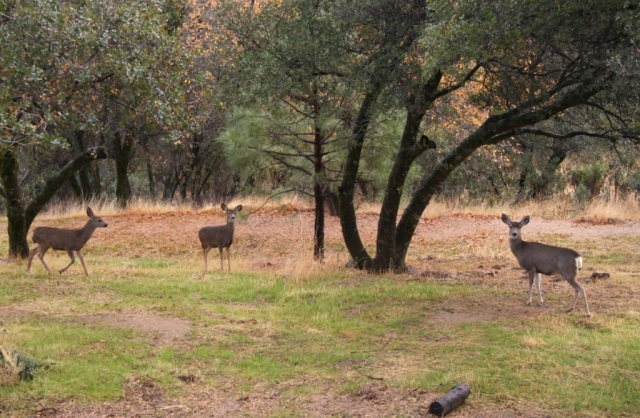How we garden
Normally, gardeners have only had themselves to please when creating a plant world around them. And that’s one of the best things about gardening, it can be so personal. You don’t have to follow any plan or design, you can use your favorite colors and plant as many flowers or vegetables as you want. Beauty and functionality have been most important.
There are cottage gardens, woodland style gardens with shade, and the ever popular herb gardens. But what about a wildlife garden? A wildlife garden is one meant to attract the native wildlife that would be living near your home if the original native plants were still there upon which they naturally thrive.
Need reasons to plant California natives?
So far, reasons to plant California natives are ones like wanting to plant varieties that naturally belong in California, planting to replace invasive species, and even choosing native plants to preserve them from extinction. Some have reasoned that lawns are water wasteful and could be replaced with an easy care native plant landscape.
Natives are also easy to grow when planted in their natural ‘homes’ so many native plant nursery owners feature this. Recently, I had a conversation with Bonnie Bladen, owner of Intermountain Nursery in Prather, about the different varieties of birds in our Mountain Area. She says the book, ‘Bringing Nature Home, How Plants Sustain Wildlife in Our Gardens’, by Douglas W. Tallamy, gives another reason to plant natives.
He says the most important reason “is the use of native species to create simplified vestiges of ecosystems that once made this land a rich source of life..”
Disappearing wildlife species
Bonnie says, “In the book, he talks about how much land mass we have converted to cities, suburbs, highways and farms (which are mostly mono culture). He said that this amounts to more than 90% of our land and that it has repercussions for the 50% of insect species who are specialists, those who evolved with certain plants as hosts for their life cycle. With the loss of these plants, there is a loss of species.”
“Tallamy says that if everyone plants just a few native plants in their gardens, that the habitat will be available for the native insects and in turn, the native birds and other species and that they will live right along side of us, in cities and suburbs. His book is very compelling.”
What each gardener can do
Bonnie says, “Plant California native plants for their beauty and suitability for our climate and soils. The gardener who does so will end up attracting beneficial native insects and in turn native birds and butterflies to their yard instead of starlings and other European species.”
This fall, in my garden, I planted new two areas with native plants only and will be enjoying seeing them grow up in the next few years and hopefully blend in with the existing plants here. Thanks to all Bonnie and also my new blogging friends who have encouraged me to grow mostly natives.
What I planted:
- Calycanthus occidentalis Spice Bush fall 2010
- Juncus ‘Carmen’s Grey’
- Arctostaphylos ‘Pacific Mist’ Oct 2011
- Salvia sonomensis ‘Dara’s Choice’
- Mimulus cardinalis Cardinal Monkeyflower
- Cleveland sage
- Ceanothus ‘Julia Phelps’
- Ceanothus ‘Dark Star’
- Penstemon ‘Margarita BOP’
In our Sierra Foothill area, we are fortunate to have a California native plant source in Intermountain Nursery. Map








5 comments